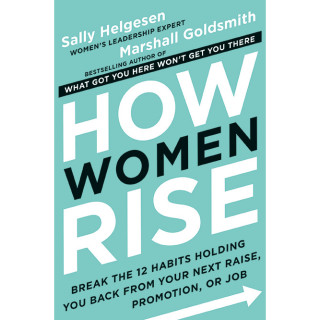How to Make a To-Don't List
Stay on track by avoiding time-wasting tasks with this productivity trick from the authors of How Women Rise.

Photo: Xavier Lorenzo/Getty Images
You probably have a daily to-do list full of tasks, commitments, and intentions—things you must get done or would like to accomplish. Maybe you check off items one-by-one as you go through your day, which gives you a sense of accomplishment and satisfaction. Maybe you like to look back on your lists because they offer proof in black and white that you haven't wasted your time and demonstrate the progress you're making on your goals.
To-do lists help you stay organized and efficient. They're useful tools, even if sometimes you wake up feeling as if your to-do list runs your life. As if you're merely an instrument whose chief purpose is meeting the demands your list imposes.
As you move higher, your to-do list usually becomes longer, and the tasks involve higher stakes. Certainly Approach finance committee chair about new strategic plan has a greater weight than Submit expenses for client lunch.
But as your list expands and feels more urgent, you might want to also consider a to-don't list, a list of items you would like to let go of. These could include things you want to stop doing and tasks you want to drop or hand off. By identifying activities that eat up your time, keep you trapped, or offer minimal reward, a to-don't list brings intentionality to what you want to say no to.
In her workshops for women leaders, coach Sally Helgesen defines being intentional as knowing what to embrace and what to let go of as you move to a higher level. The embrace is the to-do list. The let go of is the to-don't list. Balancing them requires you to give conscious attention to how you manage responsibilities, relationships, and behaviors so you can decide what really matters and what does not.
If instead you just keep adding tasks to your list, you'll start to feel overwhelmed as you rise and take on more responsibility. If this happens, you may end up strip-mining your inner resources, making it impossible to operate in a way that is sustainable, energizing, and enjoyable. And one day you'll wake up and say, "What's the point?"
Items on your to-don't list can be big or small, but your list will be most effective if it describes specific actions rather than attitudes, aspirations, or complex behaviors. This will make it manageable and concrete and provide you with items you can check off as you move through your day.
Here are some examples from women who have participated in Sally's workshops:
- I will let go of answering the phone on the first ring—it makes me feel rushed and doesn't give me time to prepare.
- I will let go of immediately saying "yes" or "no" to requests so I can take time to think about what works for me.
- I will let go of nodding my head when someone's talking because I've learned that this often gets interpreted as assent or agreement.
- I will let go of trying to win the regard of my colleague because she's made it clear that she resents me.
- I will let go of getting pulled into the gossip fests that plague our unit.
- I will let go of answering questions with "Yes but," since it's just a disguised way of contradicting others.
Jeri, a communications consultant from Denver, described the workshop in which she did this exercise as a turning point in her career. She said: "As my business expanded, I kept adding things to do—every day, every week, every year. It started to feel oppressive, as if I were some kind of victim, as if the business I'd dreamed of running was running me. Creating a to-don't list, and holding myself accountable for letting things go, gave me a way out of this swamp. Now I'm constantly on the lookout for things I can not do, whether it's scheduling extra staff meetings or packing lunches for everyone at my son's baseball practice. If I decide something's not really important, and won't add real benefit to the day, I simply say, 'Sorry, but that's on my to-don't list.'"
 From How Women Rise: Break the 12 Habits Holding You Back from Your Next Raise, Promotion, or Job, by Sally Helgesen and Marshall Goldsmith. Copyright © 2018 by Sally Helgesen and Marshall Goldsmith. Excerpted with permission by Hachette Book Group.
From How Women Rise: Break the 12 Habits Holding You Back from Your Next Raise, Promotion, or Job, by Sally Helgesen and Marshall Goldsmith. Copyright © 2018 by Sally Helgesen and Marshall Goldsmith. Excerpted with permission by Hachette Book Group.



